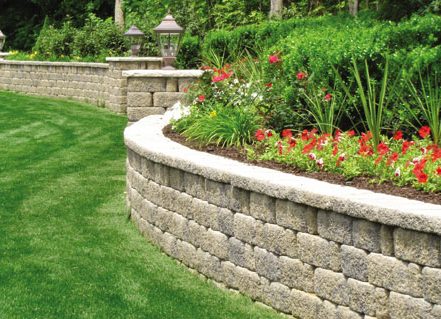We’ve talked about landscape design before as a way to transform a simple, ordinary backyard with bushes and trees into a beautiful, unique, fully designed landscape that will be the envy of your neighbors. Such diverse landscape features as patios, paths and driveways attract the most attention and require painstaking and detailed design, but there is another, no less important, feature of the yard that can bewitch with its charm, if it is done correctly combines function and form. We are talking about retaining walls. Retaining walls are important yard protection elements that also provide a unique look to your landscape.

What are retaining walls used for?
The landscape of your plot of land around the house may be uneven or uneven. You may want a flat surface where there is a hill or elevation, and sometimes, conversely, you will want a small hill so where there is a flat surface. You can take control of the horizon of your yard with retaining walls to create the perfect landscape to your liking. Using retaining walls, you can turn an unnecessary hill into a multi-level flower bed, level your yard or create a hill, raise flowering herbaceous plants to the level of bushes and even trees, or lower a patio or garden. The primary purpose of a retaining wall is to hold the soil and act as a preventative measure against erosion, but it can also act primarily as a decorative element of yard landscaping.

Materials for retaining walls.
There are many types of materials you can choose for a retaining wall in your yard, and each has its own advantages and disadvantages. Experts of the Zeleny Dvir garden center will help you choose the material that best suits the conditions of your landscape. Available to choose from: wood, building blocks, natural stone, brick or concrete. Wood will be the cheapest option, but less durable, provided there is no proper drainage.

Drainage of retaining walls.
Retaining walls made of wood are reinforced with gravel, laying filter fabric and installing a drainage pipe. This ensures proper drainage and protects the wall from water erosion. Such drainage also prevents distortions and protrusions, which stabilizes the retaining wall. Retaining walls made of blocks or bricks should have openings along the base so that water can pass without obstruction. Natural stone walls already have holes between the stones and therefore do not need separate holes for drainage.

If you are interested in learning more about retaining walls and how they can be a potential solution for your yard, please contact us – Green Yard Garden Center and visit our store garden center Mon-Fri from 8:30 a.m. to 6:00 p.m

